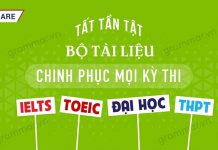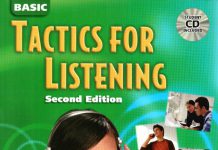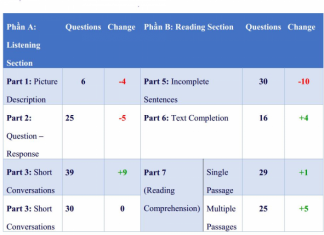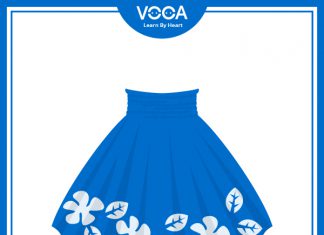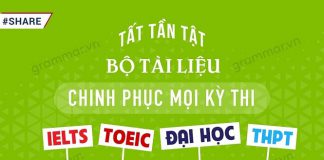This Law provides for objects subject and not subject to value-added tax, taxpayers, tax bases, tax calculation methods, and tax credit and refund.
SOCIALISTREPUBLIC OF VIET NAM
Independence– Freedom – Happiness
No. 13/2008/QH12
Hanoi, June 3, 2008
LAW ON VALUE-ADDED TAX
Pursuant to the 1992 Constitution of the Socialist Republic of Vietnam, which was amended and supplemented under Resolution No. 51/2001/QH10; The National Assembly promulgates the Law on Value-Added Tax.
Chapter I GENERAL PROVISIONS
Article 1.- Governing scope
This Law provides for objects subject and not subject to value-added tax, taxpayers, tax bases, tax calculation methods, and tax credit and refund.
Article 2.- Value-added tax
Value-added tax is a tax imposed on the added value of goods or services arising in the process from production, circulation to consumption.
Article 3.- Taxable objects
Goods and services used for production, trading or consumption in Vietnam are subject to
value-added tax, except those specified in Article 5 of this Law.
Article 4.- Taxpayers
Taxpayers include organizations and individuals producing or trading in goods or services
subject to value-added tax (below referred to as business establishments) and organizations and individuals importing goods subject to value-added tax (below referred to as importers).
Article 5.- Non-taxable objects
Law on value-added tax 2008 in Viet Nam
1. Cultivation and husbandry products, and reared and fished aquatic products which have not yet been processed into other products or have been just preliminarily processed and sold by producing and fishing organizations and individuals, and products at the stage of importation.
2. Products which are animal breeds and plant varieties, including breeding eggs, breeding animals, seedlings, seeds, sperms, embryos and genetic materials.
3. Irrigation and drainage; soil ploughing and harrowing; dredging of intra-field canals and ditches for agricultural production; services of harvesting farm produce.
4. Salt products made of seawater, natural rock salt, refined salt and iodized salt.
5. State-owned residential houses sold by the State to current tenants.
6. Transfer of land use rights;
7. Life insurance, student insurance, insurance on domestic animals, insurance on plants and reinsurance.
8. Credit provision services; securities trading; capital transfer; derivative financial
services, including interest-rate swap contracts, forward contracts, futures contracts, call or put options, foreign currency sales, and other derivative financial services as prescribed by law.
9. Healthcare and animal health services, including medical examination and treatment and preventive services for humans and domestic animals.
10. Public post and telecommunications and universal Internet services under the Governments programs.
11. Public services on sanitation and water drainage in streets and residential areas;
maintenance of zoos, flower gardens, parks, street greeneries and public lighting; funeral
services;
12. Renovation, repair and construction of cultural, artistic, public service and infrastructure works and residential houses for social policy beneficiaries, which are funded with peoples contributions or humanitarian aid.
13. Teaching and vocational training as provided for by law.
14. State budget-funded radio and television broadcasting.
15. Publication, import and distribution of newspapers, journals, specialized bulletins,
political books, textbooks, teaching materials, law books, scientific-technical books, books
printed in ethnic minority languages as well as propaganda postcards, pictures and posters, including those in the form of audio or visual tapes or discs or electronic data; money printing.
16. Mass transit by bus and tramcar.
17. Machinery, equipment and supplies which cannot be manufactured at home and need to be imported for direct use in scientific research and technological development activities; machinery, equipment, spare parts, special-purpose means of transport and supplies which cannot be manufactured at home and need to be imported for prospecting, exploring and developing oil and gas fields; aircraft, drilling platforms and ships which cannot be manufactured at home and need to be imported for the formation of enterprises fixed assets or which are hired from foreign parties for production and business activities or for lease.
18. Special-purpose weapons and military equipment for security and defense purposes.
19. Goods imported as humanitarian aid or non-refundable aid; gifts for state agencies,
political organizations, socio-political organizations, socio-political-professional organizations, social organizations, socio-professional organizations or peoples armed forces units; donations or gifts for Vietnam-based individuals within the Government-prescribed quotas; belongings of foreign organizations and individuals within diplomatic immunity quotas; and personal effects within duty-free luggage quotas.
Goods and services sold to foreign organizations or individuals or international organizations for use as humanitarian aid, and non-refundable aid to Vietnam.
20. Goods transferred out of border gate or transited via the Vietnamese territory; goods
temporarily imported for re-export; goods temporarily exported for re-import; raw materials imported for the production or processing of goods for export under contracts signed with foreign parties; goods and services traded between foreign countries and non-tariff areas and between non-tariff areas.
21. Technology transfer under the Law on Technology Transfer; transfer of intellectual
property rights under the Law on Intellectual Property; computer software.
22. Gold imported in the form of bars or ingots which have not yet been processed into fine-art articles, jewelries or other products.
23. Exported products which are unprocessed mined resources or minerals as prescribed by the Government.
24. Artificial products used for the substitution of diseased peoples organs; crutches,
wheelchairs and other tools used exclusively for the disabled.
25. Goods and services of business individuals who have a monthly income lower than the common minimum salary level applicable to domestic organizations and enterprises.
Establishments trading in non-taxable goods or services specified in this Article are not
entitled to input value-added tax credit or refund, except the cases subject to the tax rate of 0% specified in Clause 1, Article 8 of this Law.
Chapter II TAX BASES AND TAX CALCULATION METHODS
Article 6.- Tax bases
Value-added tax bases include taxable price and tax rate.
Article 7.- Taxable price
1. The taxable price is specified as follows:
a/ For goods and services sold by business establishments, the taxable price is the selling
price exclusive of value-added tax. For excise tax-liable goods and services, the taxable price is the selling price inclusive of excise tax but exclusive of value-added tax; b/ For imported goods, the taxable price is the border-gate import price plus import tax (if any) and excise tax (if any). The border-gate import price shall be determined under regulations on prices for calculating import tax;
c/ For goods and services used for barter, internal consumption or donation, the taxable price is the price for calculating value-added tax on goods and services of the same or equivalent kinds at the time of barter, consumption or donation; 6 / 16 Law on value-added tax 2008 in Viet Nam
d/ For asset lease, the taxable price is the rent exclusive of value-added tax; In case of asset lease for which rents are paid periodically or in advance for a certain lease duration, the taxable price is the rent paid periodically or in advance, exclusive of value-added tax;
In case of hiring foreign machinery, equipment or means of transport which cannot be
manufactured at home for sublease, the taxable price excludes the rent payable to the foreign party;
e/ For goods sold by mode of installment or deferred payment, the taxable price is the lump-sum selling price of such goods, exclusive of value-added tax, excluding the interest on installment or deferred payment;
f/ For goods processing, the taxable price is the processing remuneration exclusive of
value-added tax;
g/ For construction and installation activities, the taxable price is the value of the
handed-over work, work item or job, exclusive of value-added tax. If construction or installation activities do not cover materials, machinery or equipment, the taxable price is the construction or installation value, excluding the value of materials, machinery or equipment;
h/ For real estate trading, the taxable price is the real estate-selling price exclusive of
value-added tax, excluding the charge for transferring land use rights or the land rent remittable into the state budget;
i/ For commission-enjoying goods or service trading agency and brokerage, the taxable price is the commission on these activities, exclusive of value-added tax;
j/ For goods and services for which payment documents indicating payment prices inclusive of value-added tax are used, the taxable price is determined according to the following formula:
|
2. Taxable prices of goods and services specified in Clause 1 of this Article include
surcharges and additional charges to be enjoyed by business establishments.
3. Taxable prices are determined in Vietnam dong. In case taxpayers have foreign currency turnover, such turnover must be converted into Vietnam dong at the average exchange rate on the inter-bank foreign currency market, announced by the State Bank of Vietnam at the time turnover is generated, for the determination of taxable prices.
Article 8.- Tax rates
1. The tax rate of 0% applies to exported goods and services, international transportation
and goods and services not liable to value-added tax specified in Article 5 of this Law upon exportation, except cases of transfer of technologies or intellectual property rights
abroad;
offshore reinsurance services; credit provision, capital transfer and derivative financial
services; post and telecommunications services; and exported products which are unprocessed mined resources and minerals specified in Clause 23, Article 5 of this Law.
2. The tax rate of 5% applies to the following goods and services:
a/ Clean water for production and daily life;
b/ Fertilizers; ores for fertilizer production; insecticides, pesticides and plant and animal
growth stimulators;
c/ Feeds for cattle, poultry and other domestic animals;
d/ Services of digging, embanking and dredging canals, ditches, ponds and lakes for
agricultural production; growing, tending, and preventing pests and insects for, plants; preliminary processing and preservation of agricultural products;
e/ Unprocessed cultivation, husbandry and fishery products, except products specified in Clause 1, Article 5 of this Law;
f/ Preliminarily processed rubber latex; preliminarily processed turpentine; nets, main ropes and fibers for making fishing-nets;
g/ Fresh and live food; unprocessed forest products, except timber, bamboo shoots and products specified in Clause 1, Article 5 of this Law;
h/ Sugar; by-products in sugar production, including molasses, bagasse and sludge;
i/ Products made of jute, rush, bamboo, leaf, straw, coconut husks and shells and Eichhornia crassipes, and other handicrafts made of agricultural raw materials; preliminarily processed cotton; paper for newspaper printing;
j/ Special-purpose machinery and equipment for agricultural production, including ploughing machines, harrowing machines, rice-planting machines, seeding machines, rice-plucking machines, reaping machines, combine harvesters, agricultural product harvesters, insecticide or pesticide pumps or sprayers;
k/ Medical equipment and instruments; medical cotton and bandage; preventive and curative medicines; pharmaco-chemistry products and pharmaceuticals used as raw materials for the production of curative and preventive medicines;
l/ Teaching and learning aids, including models, figures, boards, chalk, rulers, compasses,
and equipment and tools exclusively used for teaching, research and scientific experiments;
m/ Cultural, exhibition, physical training and sports activities; art performances; film
production; film import, distribution and screening;
n/ Children toys; books of all kinds, except books specified in Clause 15, Article 5 of this
Law;
o/ Scientific and technological services under the Law on Science and Technology.
3. The tax rate of 10% applies to goods and services not listed in Clauses 1 and 2 of this
Article.
Article 9.- Tax calculation methods
Value-added tax calculation methods include value-added tax credit method and method of calculation of tax based directly on added value.
Article 10.- Tax credit method
1. The value-added tax credit method is specified as follows:
a/ The payable value-added tax amount according to the tax credit method is the output value-added tax amount minus the creditable input value-added tax amount;
b/ The output value-added tax amount is the total amount of value-added tax on sold goods and services indicated in the added-value invoice;
c/ The creditable input value-added tax amount is the total value-added tax amount indicated in the added-value invoice on goods or service purchase and the document proving the payment of value-added tax on imported goods, and must satisfy the conditions specified in Article 12 of this Law.
2. The tax credit method applies to business establishments which fully observe regulations on accounting, invoices and documents as prescribed by the law on accounting, invoices and documents, and register to pay tax according to the tax credit method.
Article 11.- Method of calculation of tax based directly on added value
1. The method of calculation of tax based directly on added value is specified as follows:
a/ The payable value-added tax amount according to the method of calculation of tax based directly on added value is the added value of sold goods or services multiplied by the value-added tax rate;
b/ The added value is the selling price of goods or services minus the purchase price of
such goods or services.
2. The method of calculation of tax based directly on added value applies to the following
cases:
a/ Business establishments and foreign business organizations and individuals without Vietnam-based resident establishments but having incomes generated in Vietnam that fail to fully observe regulations on accounting, invoices and documents;
b/ Gold, silver and gem trading activities.
Chapter III TAX CREDIT AND REFUND
Article 12.- Input value-added tax credit
1. Business establishments which pay value-added tax according to the tax credit method are entitled to input value-added tax credit as follows:
a/ Input value-added tax on goods or services used for the production or trading of goods or services subject to value-added tax may be wholly credited;
b/ For goods or services used for the production and trading of goods or services both
subject and not subject to value-added tax, only the amount of input value-added tax on goods or services used for the production and trading of goods or services subject to value-added tax is creditable. The input value-added tax on fixed assets used for the production and trading of goods or services both subject and not subject to value-added tax may be wholly credited;
c/ The input value-added tax on goods or services sold to organizations or individuals that
use humanitarian or non-refundable aid capital may be wholly credited;
d/ The input value-added tax arising in a month shall be declared and credited upon the determination of the payable tax amount of that month. In case a business establishment detects errors in the declared or credited input value-added tax amount, additional declaration and credit may be conducted; the maximum time limit for additional declaration and credit is 6 months from the time of detecting errors.
2. Conditions on a business establishment to be entitled to input value-added tax credit are specified as follows:
a/ Having an added-value invoice on goods or service purchase or a document proving the payment of value-added tax at the stage of importation;
b/ Having a via-bank payment document of purchased goods or services, except goods or services valued at under twenty million Vietnam dong upon each time of purchase;
c/ For exported goods and services, apart from the conditions specified at Points a and b of this Clause, the business establishment must also have a contract signed with a foreign party on goods sale or processing or service provision, a goods or service sale invoice, a via-bank payment document and a customs declaration. Payment for exported goods or services by clearing between exported goods or services and imported goods or services or paying debts on behalf of the State is regarded as via-bank payment.
Article 13.- Cases eligible for tax refund
1. Business establishments which pay value-added tax according to the tax credit method are entitled to value-added tax refund if, for three or more consecutive months, they have some input value-added tax amount not yet fully credited. Business establishments having registered to pay value-added tax according to the tax credit method are entitled to tax refund if they have new investment projects and some amount of value-added tax on purchased goods or services used for investment not yet fully credited and the remaining tax amount of two hundred million Vietnam dong or more.
2. Business establishments which export goods or services in a month are entitled to value-added tax refund on a monthly basis if they have a non-credited input value-added tax amount of two hundred million Vietnam dong or more.
3. Business establishments which pay value-added tax according to the tax credit method are entitled to value-added tax refund if upon ownership transformation, enterprise
transformation, merger, consolidation, separation, split, dissolution, bankruptcy or operation termination, they have an overpaid value-added tax amount or have some input value-added tax amount not yet fully credited.
4. Business establishments possessing value-added tax refund decisions issued by competent agencies as provided for by law, and cases eligible for value-added tax refund under treaties to which the Socialist Republic of Vietnam is a contracting party.
Article 14.- Invoices and documents
1. Goods and service purchase and sale must be accompanied by invoices and documents according to law and the following regulations:
a/ Business establishments which pay value-added tax according to the tax credit method
shall use added-value invoices; such an invoice must be filled in fully and properly, displaying all surcharges and additional charges (if any). In case value-added tax-subject goods or services are sold with added-value invoices that do not indicate value-added tax amounts, the output value-added tax shall be determined to be the payment price indicated in the invoice multiplied by the value-added tax rate, except cases specified in Clause 2 of this Article;
b/ Business establishments which pay tax according to the method of calculation of tax based directly on added value shall use sale invoices.
2. For stamps and tickets which are payment documents pre-printed with payment prices, those prices are inclusive of value-added tax.
Chapter IV IMPLEMENTATION PROVISIONS
Article 15.- Implementation effect
1. This Law takes effect on January 1, 2009.
2. This Law replaces the following laws:
a/ The 1997 Law on Value-Added Tax;
b/ Law No. 07/2003/QH11 Amending and Supplementing a Number of Articles of the Law on Value-Added Tax;
3. To annul Article 2 of Law No. 57/2005/QH11 Amending and Supplementing a Number of Articles of the Law on Excise Tax and the Law on Value-Added Tax.
Article 16.- Implementation guidance
The Government shall detail and guide the implementation of Articles 5, 7, 8, 12 and 13 and other necessary contents of this Law to meet management requirements. This Law was passed on June 3, 2008, by the XIIth National Assembly of the Socialist Republic of Vietnam at its third session.
CHAIRMAN OF THE NATIONAL ASSEMBLY
Nguyen Phu Trong






